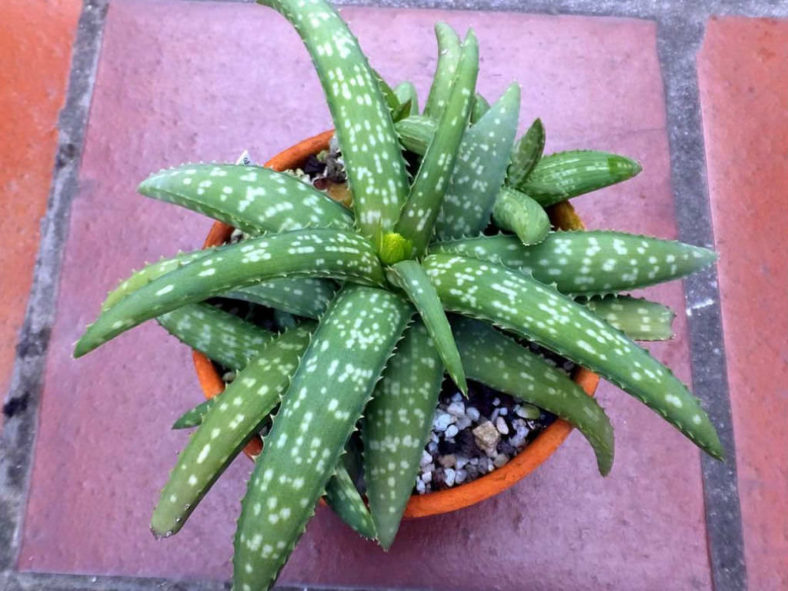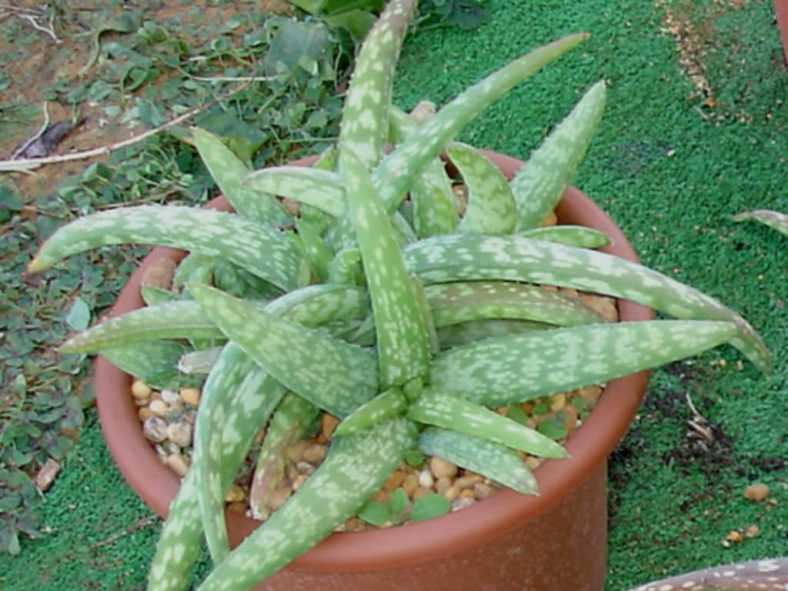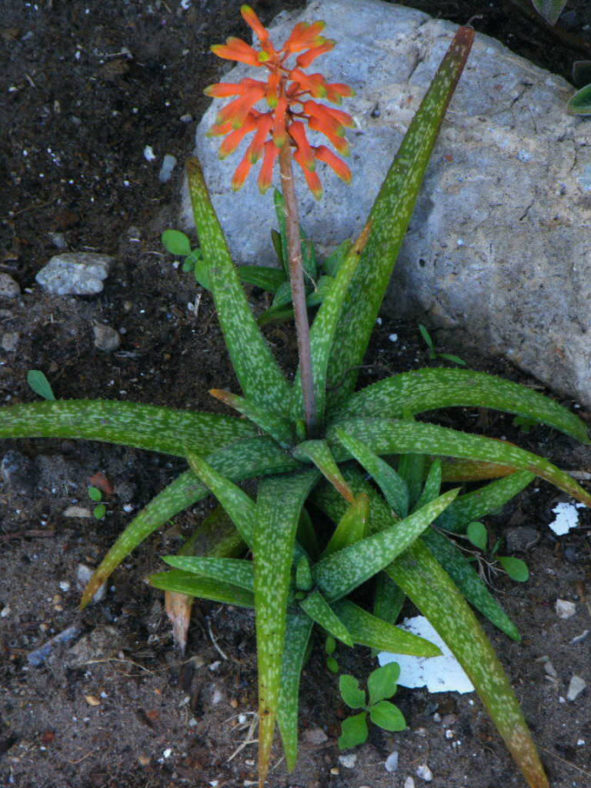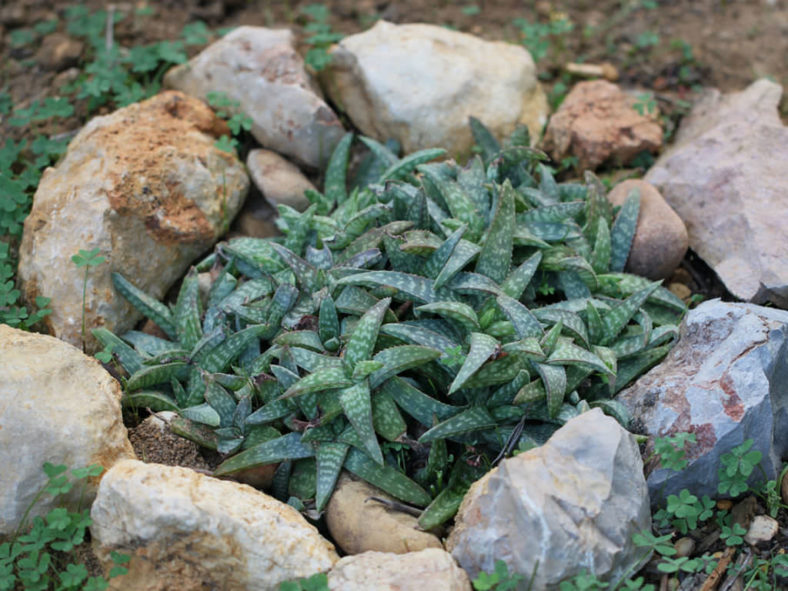Scientific Name
Aloe ellenbeckii A.Berger
Synonym(s)
Aloe dumetorum
Scientific Classification
Family: Asphodelaceae
Subfamily: Asphodeloideae
Genus: Aloe
Description
Aloe ellenbeckii is a small succulent that forms low clumps with many open rosettes of dark green leaves with white spots on the upper and lower surfaces and tiny teeth along the margins. The rosettes can reach a diameter of 12 inches (30 cm). The leaves are narrow but thick and can grow up to 9 inches (22.5 cm) long. The new leaves emerge nearly vertically and then arch over gracefully.
From fall to mid-winter, the rosettes produce branched inflorescences of orange-red flowers with a round swollen base and green tips in the bud opening to yellow from the bottom of the inflorescence up. The inflorescence can grow up to 2 feet (60 cm) tall.

Hardiness
USDA hardiness zones 9b to 11b: from 25 °F (−3.9 °C) to 50 °F (+10 °C).
How to Grow and Care
Aloes are very forgiving plants. However, as with all succulents, Aloe must never be allowed to sit in stagnant water, and the plant should be carefully monitored to watch for signs of overwatering.
These succulents are not particularly fast-growing and will only rarely need repotting. However, repot Aloes tipping over their pots or have ceased growing in the spring. Use a fast-draining potting mix with one-third sand or pebbles. When repotting a larger plant, dividing the root ball is possible. Some varieties of Aloe will send off offsets that can be potted independently.
Aloe plants need strong, bright light. Once acclimated, they can withstand full summer sun. In the winter, provide bright light. It prefers warmer temperatures of 70 to 80 °F (21 to 27 °C) but will survive down to 40 °F (4.5 °C). Feed with a succulent fertilizer in the summer only. Suspend feeding in the winter as the plant goes dormant.
See more at How to Grow and Care for Aloe.
Origin
Aloe ellenbeckii is native to Ethiopia, Somalia, and Kenya.
Links
- Back to genus Aloe
- Succupedia: Browse succulents by Scientific Name, Common Name, Genus, Family, USDA Hardiness Zone, Origin, or cacti by Genus
Photo Gallery
Click on a photo to see a larger version.



